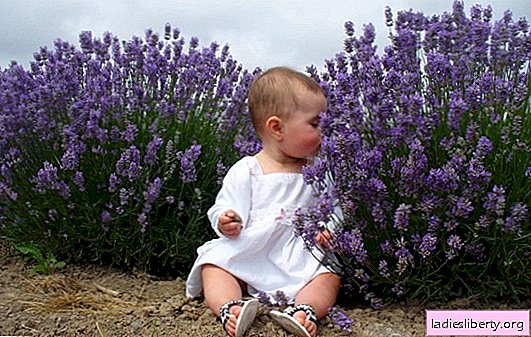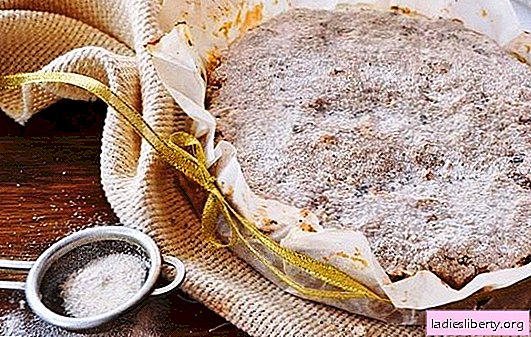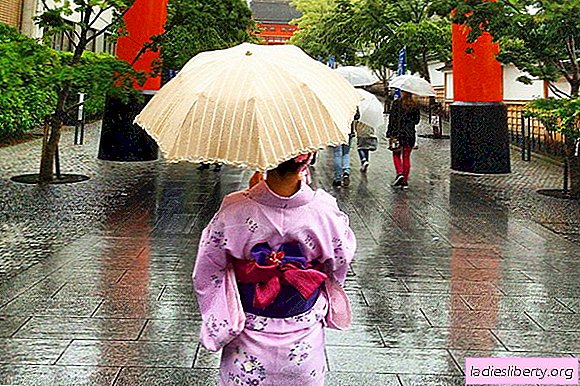
Lavender is a perennial but thermophilic plant. By no means in every climatic zone does the shrub tolerate winter. Most often it is grown as a pot plant.
How to plant lavender: seeds, layering or cuttings
Lavender is used to decorate borders and rock gardens. Planting should be approached consciously.
Shank cuttings
Quite easily lavender propagates by cuttings, which can be easily rooted. Prepared shoots are deepened in loose and moist soil. With proper care, after a month, the plants are planted in a permanent place.
The photo shows how to cut lavender

Important! For the successful rooting of cuttings, they are kept in a greenhouse.
Receive layering
In addition, lavender, which winters in the garden, propagates by layering. To do this, the shoots are tilted to the ground, pinned and covered with earth. As soon as the layers begin to grow, they are carefully separated from the mother bush and planted.
Sowing seeds for seedlings
If the climate does not allow to grow shrubs, like a perennial plant, then it is better to plant lavender seeds. We will dwell on this in more detail.
First of all, the seeds must be stratified, that is, maintained at cold temperatures. It is best to carry out natural stratification and sow the seeds immediately into the ground at the end of autumn. In the spring, it remains only to take care of the shoots of lavender in the open ground.
But you can artificially stratify the seeds before planting.
1. Dry seeds are mixed with river sand.
2. Place in a container with a lid.
3. Store seeds on the bottom shelf of the refrigerator for 1-2 months.
This procedure not only improves seed germination, but also makes the process more friendly.

After stratification, the seeds are sown in seedling boxes. Lavender seeds are small, so the planting is carried out sparse, trying not to bury the planting material in the ground.
Important! The bush planted in this way will bloom only after 1-2 years. All this time the root system of the plant will be formed.
How to care for lavender (photo) in the seedling period
After sowing, the container with seeds is covered with glass and placed in a warm and bright place. The optimum temperature for germination of lavender seeds is 16-22 C.
As soon as the shoots appear, the shelter is removed. At the same time, additional lighting for seedlings must be organized, otherwise it will stretch.

In a herd of two true leaves, seedlings are picked or seedlings are thinned so that a distance of at least 5 cm remains between them.
Watering seedlings must be very careful so as not to wet the soil too much. Lavender doesn't like that.

Seedlings are transferred to a permanent place only at the end of May, when there is no return frost.
Outdoor planting of lavender
For the successful cultivation of lavender, it is very important to choose a place and soil.
Lavender location
The shrub prefers light and warm areas, hardly tolerates the shadow. With insufficient light, lavender blooms poorly, looks dull.
The root system of the shrub does not respond well to high soil moisture, so it is better not to grow it in wetlands and lowlands. If the groundwater in the area lies high, and you want to plant lavender, then you must make a drainage layer. They use pebbles, broken brick and other material.
The soil
The quality and acidity of the soil is important when growing shrubs. Before planting, wood ash and lime are added to the ground, which well deoxidizes the earth.
In addition, lavender prefers loose and breathable soil. On heavy soils, compost, sand and humus are used. This will not only make the soil structure loose, but also enrich it with useful substances.
Important! Lavender does not tolerate the proximity to weeds, so the soil is loosened before planting and the rhizomes of weeds are removed.
For the same purpose, they mulch the beds with lavender. But the base of the bush should be open, which will protect the plant from rot.
Proper planting of lavender is as follows:
• the depth of the holes is equal to the length of the root system;
• distance between seedlings from 80 to 120 cm. It depends on the variety;
• the roots are trimmed slightly before planting;
• the seedling is set in the prepared hole;
• the root neck is buried by 5-7 cm.
After planting, the plant is well watered and sprinkled with mulch.
Outdoor Lavender Care
It is worth considering that in the first year after planting, the shrub grows very slowly. If buds are tied, they must be removed. To lavender well took root, young seedlings are regularly watered. After each watering, be sure to loosen the soil or mulch the bed.
Top dressing
It’s impossible to grow lavender without using fertilizers. As top dressings, water-soluble mineral fertilizers for flowers are used. They are introduced during the flowering period. The concentration of the working solution is 2%.
At the beginning of the growing season, lavender is fed with nitrogen-containing preparations so that the bush has grown enough green mass. In mid-July, such dressing ceases, otherwise the plant will "fatten" and will not have time to prepare for wintering, will not bloom.
In addition, lavender is fed with organic fertilizers. Well established compost and humus. A thick layer of mulch from these materials allows you to completely abandon the application of fertilizers.
Pruning
Trimming is not a mandatory but useful procedure. With its help, lavender forms a lush bush, it blooms better. Do not give up cropping.
The first time the plant is pruned immediately after flowering, while the shoots are shortened only a few centimeters.

In the fall, cardinal pruning of lavender is carried out, but you should not be very zealous, otherwise the plant will die in winter.
Preparing lavender for the winter
Most often, lavender is grown in the southern regions of the country, where it winters well. In severe northern conditions, the plant is not left in the open ground, but transplanted into a tub. In this form, lavender winters indoors.
If the climate allows, then the shrub is left in the open ground, but carefully prepared for winter.
Firstly, if winter is expected to have a little snowy winter, then the plant is additionally insulated with compost.
Secondly, the bush is trimmed and covered with spruce spruce branches.
Important! Warm lavender with the usual method - dry foliage is not allowed. It will rot under such shelter.
Problems When Growing Lavender
In the open ground, the bush is quite resistant to various diseases and pests. But sometimes the plant is attacked by slobbery pennies, cicadas and rainbow beetles. Radical measures will help get rid of pests: spraying and changing mulch.
Violation of the irrigation regime leads to gray rot. If time is lost, the bush is uprooted and burned so that the disease does not spread to all plantings.
As you can see, planting and caring for lavender is quite simple, it is enough to adhere to all recommendations for choosing a place, top dressing and pruning. With this care, the shrub will remain healthy, beautiful and bloom profusely.











